More like this in the categories: Guided tours / Georgia tours


At the very edge of Europe, wedged between mighty mountains and wide waters, a small country is crammed in. Shielded by the vast land masses of Russia and Turkey, separated from the rest of Europe by the Black Sea, the people of Western Europe initially had little connection with the young state of Georgia. And yet Christian communities were founded here as early as the 1st to 3rd centuries. Even today, Georgians are deeply rooted in the Christian Orthodox faith. The year-round mild climate and the impressive beauty of the Caucasus mountains make Georgia a top destination for nature-loving travelers.
The subtropical Black Sea coast attracts bathers from spring to autumn. At a distance of a few hundred kilometers, visitors experience an enormous variety of landscapes and vegetation zones. And kayakers will also find perfect conditions in Georgia: in spring the steep, almost tropical green valleys of the Black Sea coast near Batumi beckon, in early summer and autumn the rivers of the Lesser Caucasus are full of sap. On the Mtkvari, which drains large parts of the country on its way from the Turkish highlands to the mouth of the Caspian Sea, long-distance paddlers will find a river valley that is still untouched for long stretches. Toros Outdoors has been offering whitewater trips in Georgia for over ten years.
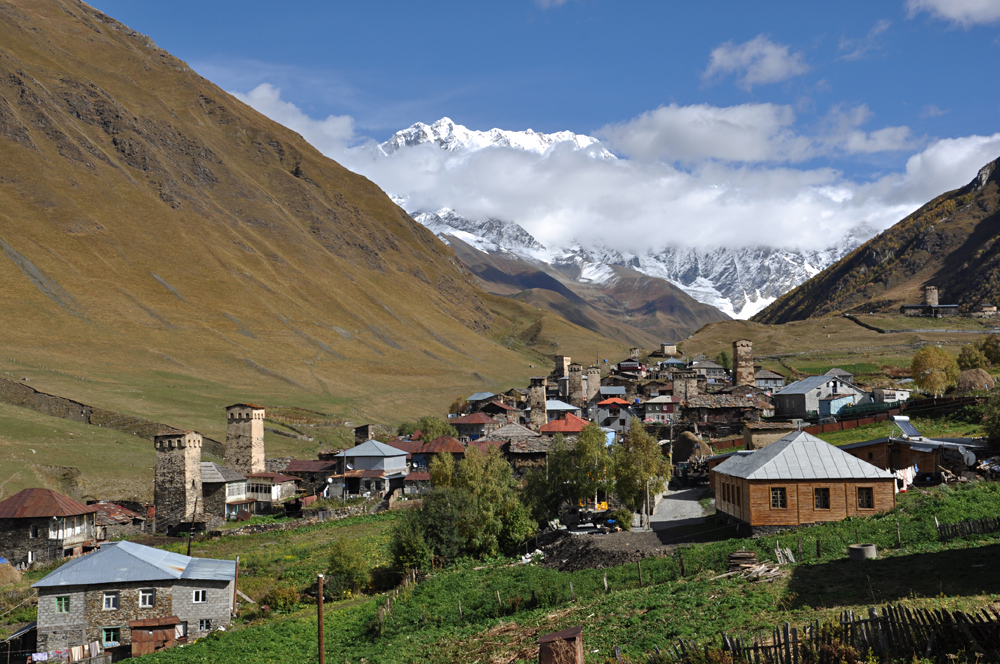
The paddling
The main paddling season in the Greater Caucasus ranges from April to November. Powerful glacial rivers such as Tergi, Rioni, Tskhenistskali and Enguri drain the eternal snowfields of the mountains up to 5000 meters high. In late summer, even temperate souls will get their money's worth. Clear side streams with technical stages complement the often very long stages of the main rivers.
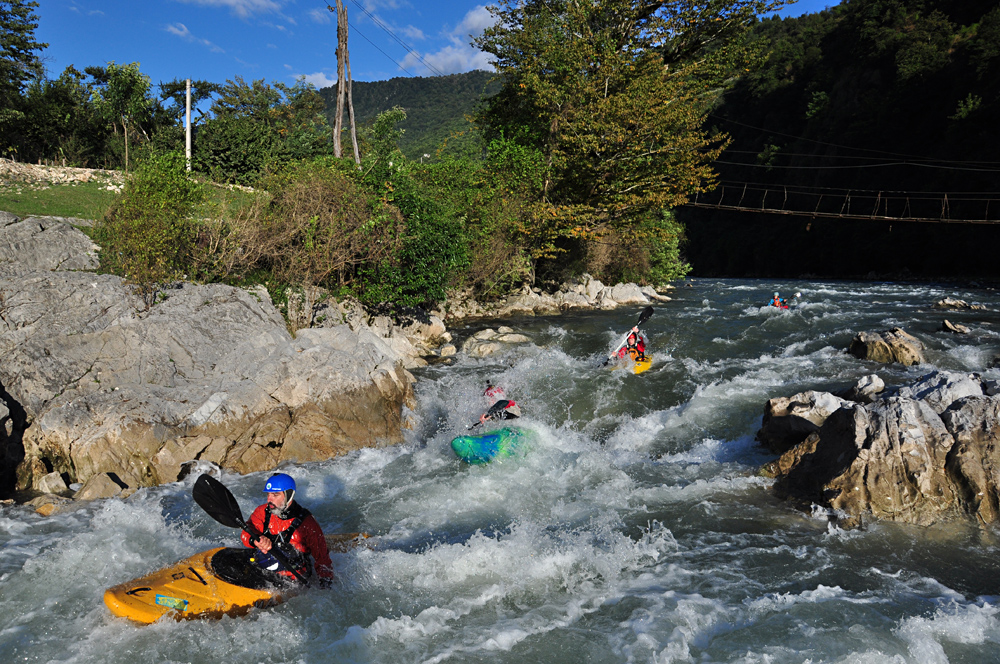
During our whitewater camps we travel to various regions of the Greater Caucasus, where we paddle the glacial rivers that have become tamer after the snow melts, with the four-thousanders behind us. Warm, humid weather in the central lowlands around Tbilisi and Kutaisi contrasts with the autumnal atmosphere in the high valleys. Good water levels are guaranteed thanks to strong glacier melt and the (so far) lack of power plant regulation.
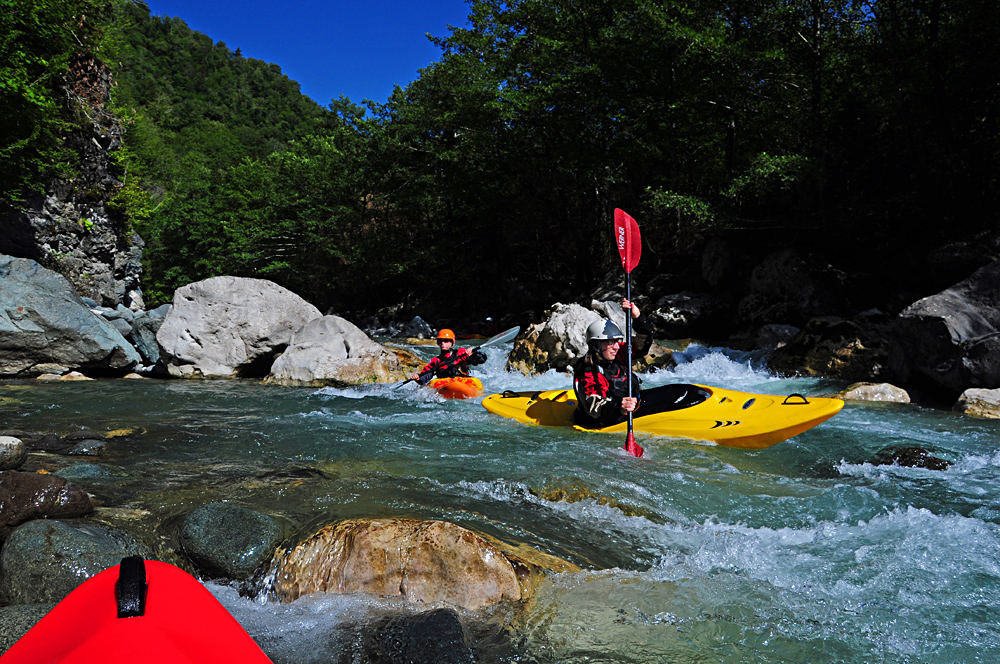
Camp I - The classics of the west
This trip takes us to the classics of the Greater Caucasus and is open to everyone who feels safe on WW III. The central location of Kutaisi Airport makes the area in the northwest even better accessible, and the Svaneti mountains are only a stone's throw away. One of the main destinations of the trip are the Rioni (WW II-IV) and Tskhenistskali (WW II-IV) rivers in Ratscha and Lower Svaneti. A large number of stages allow us to find ideal sections for every level of driving. Provided there is enough water, we head for the moderately difficult rivers of the subtropical west. Kintrishi (WW II-IV), Khobistskali (WW III-IV) and Tekhuri (WW III-IV) welcome us with clear water and blocked gushes.
Top-class white water is guaranteed in the Georgian Indian Summer. But culture is not neglected either: in the north of Kutaisi, a whole series of monasteries that are well worth seeing adorn the foothills. The hostel of the artist family Gugashvili serves us as a starting point in the Rionital, from there we explore the relics of the Soviet climatic health resort Shovi.
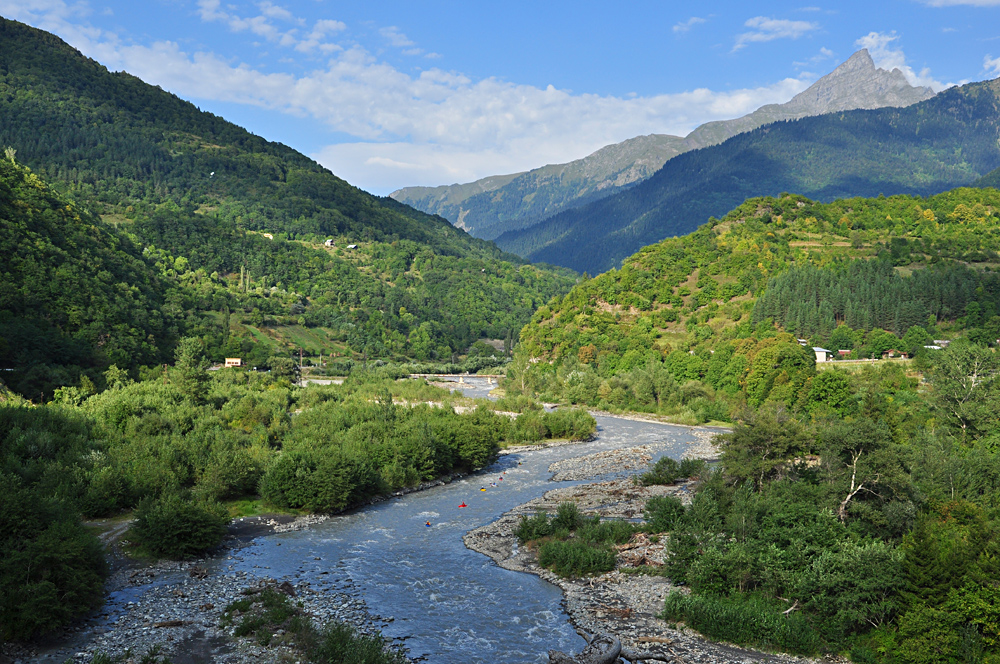
program and skills
Depending on the size of the group, the camp is led by one or two qualified canoe instructors. Although the driving program corresponds to the character of a guided tour, we can train units on paddling technique, driving tactics and safety on request. The technical level of the rivers is around WW III +, only individual (relocatable) places achieve a (weak) four. If you want to take part in the tour, you should have knowledge of the upscale III. Difficulty level. Mastering the role is an advantage, but not a must.
Camp II - The Caucasus for beginners
You are not looking for top athletic performance. You want to experience the magic of the Caucasus, paddle relaxed through Georgia. Experience the landscape, culture and cuisine in all their glory, but without being afraid of the water. You can safely paddle WW II-III, if not in a kayak, then in an inflatable canoe. Welcome to the "Caucasus for Beginners" camp, which was held for the first time in 2019. We take a full 14 days not only to experience the classic glacial rivers of the Greater Caucasus. We also pay a visit to the east of the country with the not so often paddled rivers Aragvi headwaters and the longest river in Transkauskasia, the Mtkvari (Russian: Kura). Of course we also get to see the spectacular Mount Kazbek. At his feet we paddle in the high valley of the fast-paced Tergi at 2000 meters. The border area to Armenia, which is not very well developed for tourism, forms the impressive contrast.

program and skills
Depending on the size of the group, the camp is led by one or two canoe instructors. Although the driving program corresponds to the character of a guided tour, we can train units on paddling technique, driving tactics and safety on request. The technical level of the rivers is WW II-III +. If you want to take part in the tour, you should have solid skills in WW II-III level of difficulty.

Camp III - Indian Summer in Georgian
Solid mastery of WW III+ is a prerequisite for participating in the Caucasus Camp III. If necessary, we divide the group and attack on different sections. This means that even experienced WW IV paddlers get a chance. In addition to demanding stages of the great glacial rivers, we head for the creek districts of western Georgia. The little-known jungle creeks of the (Lesser) Caucasus are hidden in the subtropical valleys of Adjara and Samogrelo. Flanked by moss-covered rocks, entwined with ferns almost as tall as a man, the "Hidden Creeks" of the West, located at barely a hundred meters above sea level, are among the most beautiful that the paddling map has to offer. One or two rainy days provide the necessary additional water, but even at the beginning of October the days in the lowlands near the sea are still warm.

A water-safe option, even in dry weather, is the valley of the Rioni. The Rioni offers several massive stretches between WW II and IV + in autumn. There is plenty of time to enjoy the natural mountain landscape of Ratschas on the easy intermediate pieces. In addition to the landscape and water, another plus point: the lovingly managed guesthouses with really delicious cuisine. Also in the Greater Caucasus are Tskhenistskali (WW III and IV) and Kheledura (WW III-IV +) in Lower Vanetia. The area, which is still little touched by tourism, inspires with endless waves, on the Kheledura lovers of tightly blocked white water get their money's worth. Provided there is enough water, we spend about half of the time in western Georgia on the rivers Supsa (up to WW IV +), Bzhusha (WW II-IV +), Khobistskali and Tekhura, Machakhela (several stages WW III-V) and Kintrishi (WW III-IV ).
If the water in the west fits, we will stay in a hotel directly on the Black Sea beach. If there is not enough water for the deeper rivers of western Georgia, there is time for the spectacular gorge rivers Upper Svaneti Enguri (WW III-IV +) and Nenskra (WW III-IV +).
program and skills
Depending on the size of the group, the camp is led by one or two canoe instructors. Although the tours correspond to the character of a guided tour, we can train units on paddling technique, driving tactics and safety on request. The technical level of the rivers is appropriate for the respective subgroup between WW III and IV +, individual (relocatable) places can also be more difficult. If you want to take part in the tour, you should have a solid knowledge of III. Difficulty level. If you want to paddle in the difficult group, you have to have a safe role, saddle firmness in the fourth grade and good physical fitness.
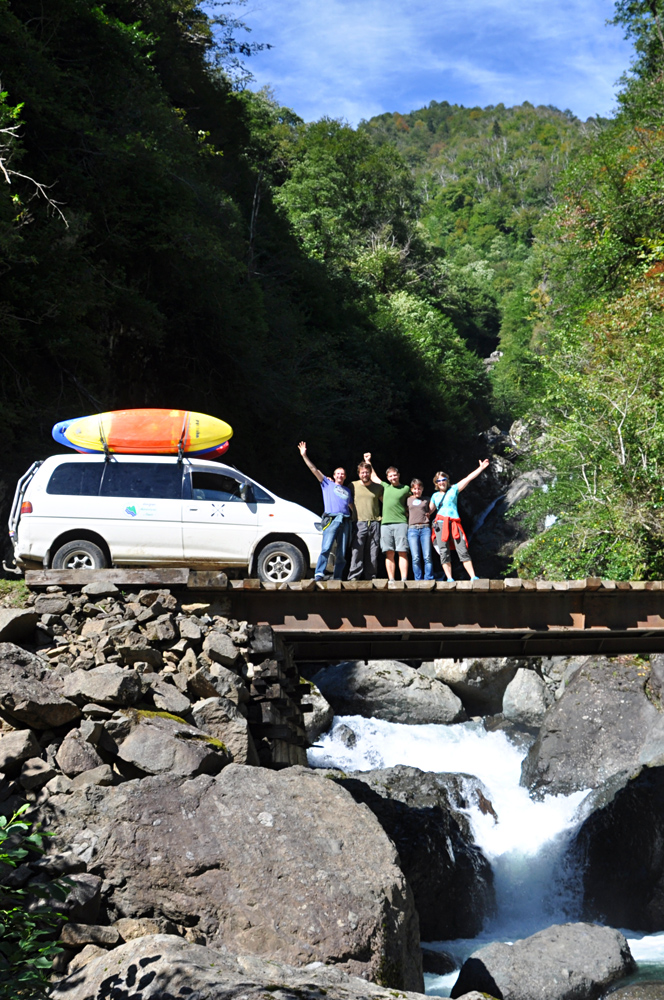
Logistics, accommodation & food
The recommended journey starts at Memmingen, Dortmund or Hamburg airports, and since November 2021 Berlin and Vienna have also been served again. From there you take a direct flight to Kutaisi. Wizz Air takes us directly to the paddling paradise of West Georgia; thanks to a special agreement, the kayaks go on board without any problems.
We then continue on site - either in the all-wheel drive van Mitsubishi Delica or the all-terrain Mercedes Sprinter. Our drivers know the route just as well as the capabilities of their cars. This means that even the most remote river valleys can be reached. And for the most serious cases there is always a Ural truck...

The overnight stay is almost always family-style in small guesthouses or camps close to nature. Depending on occupancy, our long-standing partner Misha can also ensure you have relaxing days in the self-catering house on site. When choosing accommodation, we adapt flexibly to the weather and your mood.

Anyone who has traveled in the hinterland of Turkey knows what hospitality means in the Orient. The Christian people of Georgia are in no way inferior to their brothers in the south. How often have the doors opened to families who were completely strangers? How often was the table richly laid with the delicacies of one's own garden and sincere glances met with mutual appreciation to the resounding sound of Georgian toasts? Gaumajos!
Georgian cuisine impresses with a mix of oriental and Slavic influences. Walnuts, pomegranates and coriander are often found in the food. The long Georgian tables are richly laid out with kinkali, kachapuri, badrishani and grilled meat or meat cooked in sauce. And then there is the sweet Georgian wine...
Culture
Hidden behind the Iron Curtain for half a century, in the XNUMXs the scene of bloody civil wars, blood feuds and corruption of the worst kind: the Caucasus has so far evoked rather unpleasant associations among Western Europeans. But secretly, quietly and quietly, a small country has opened up to tourism and is attracting mountaineers and kayakers with nature in XXL format.
Georgia is home to one of the oldest churches in the world. Many Georgians are devout Christians and maintain their religious traditions. The family is at the top of the ladder of the hierarchy of values. The decades-long influence of Soviet communism seems to have strengthened the awareness of the faith of the fathers.
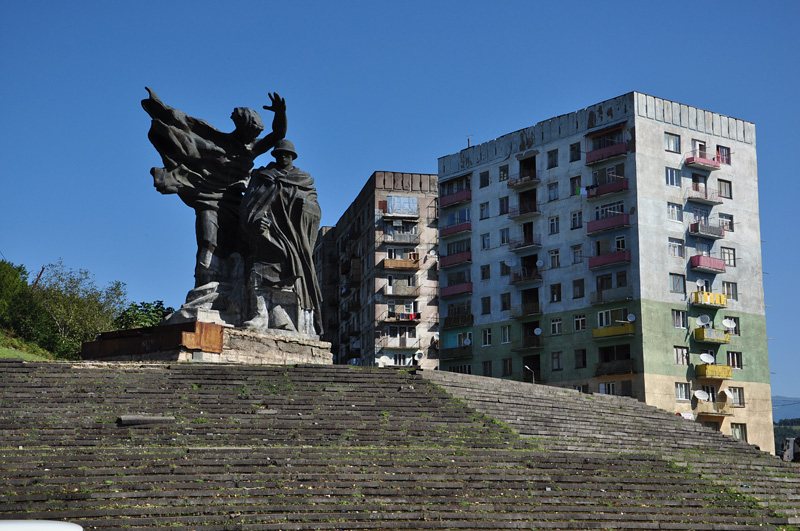
Under the presidency of Saakashvili, who modeled the country's policies on Europe and the USA, Georgia opened up to the market economy at a rapid pace. Witnesses of the socialist era are nevertheless omnipresent. Prefabricated buildings in Tbilisi and other cities, indestructible Kamas trucks in the villages, lovingly cared for Volga limousines that zip along tracks at a walking pace that no European would expect of their mid-range car. Not every technical innovation has survived the storms of history: industrial brownfields that have hardly been dismantled and main roads that have not yet been repaired and can only be accessed by four-wheel drive are witnesses to economic collapse.
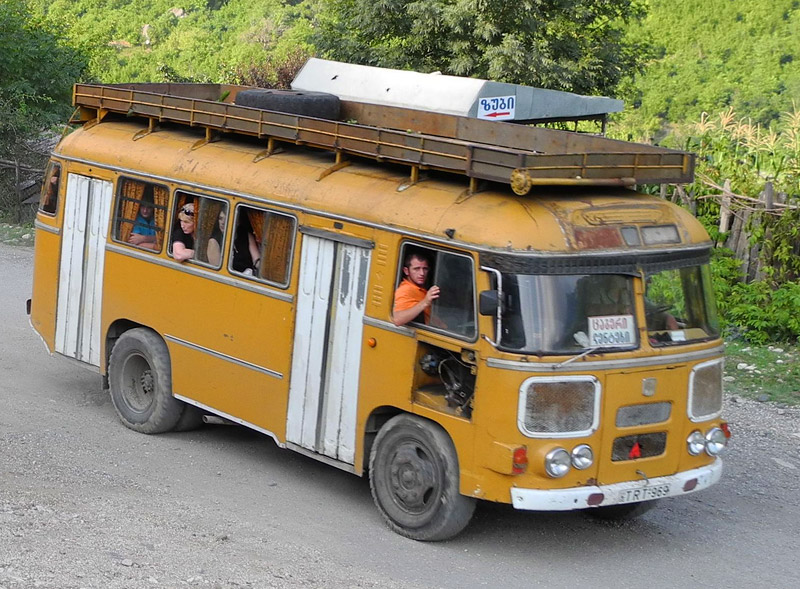
The often rural scenes are flattering to the Western European's gaze; through the social-romantic lens we feel like we have been transported back a good half a century. We should not forget that life between deindustrialization and unspoiled nature (“All the food here is still organic!”) often loses its appeal when it becomes part of everyday life. So it is still a task not to appear as an unworldly Westerner who is taking a two-week vacation from the consumer society, but rather to approach the realities in the host country with care and respect.
Read more
Our guide Misha in the Country-People-Adventure series: »Georgia's wild beauty – from the Black Sea coast to the mountains« (NDR September 14.09.2023, XNUMX)
You can get an impression of the landscape, rivers and, last but not least, the attitude to life during a trip to Georgia in the Travel Story “Advocates Go Georgia”
A detailed travel report with a detailed information box is included KANU MAGAZINE, issue 1/2014 published (also available to order at www.kanumagazin.de). Also in KANU MAGAZIN, issue 1/2018. »Gamarjobat, good life!« – all information about the kayaking paradise of Georgia in a nutshell
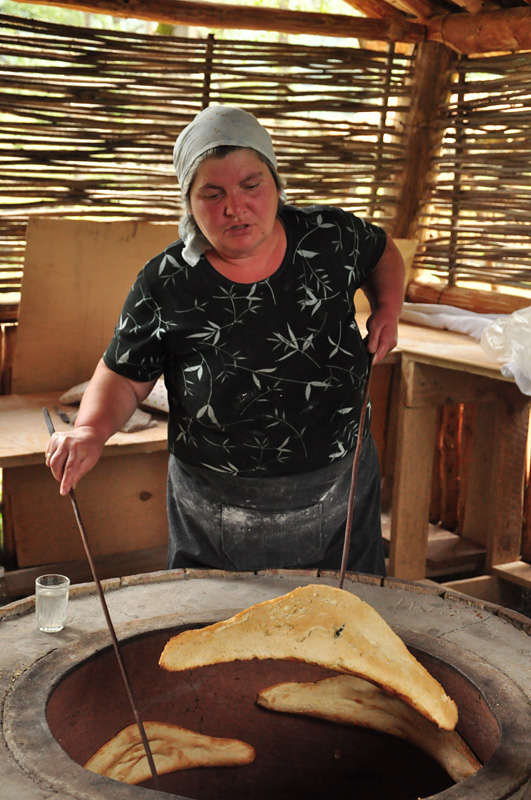













































 + Invoice (with prepayment)
+ Invoice (with prepayment)
You must logged in be to post a comment.